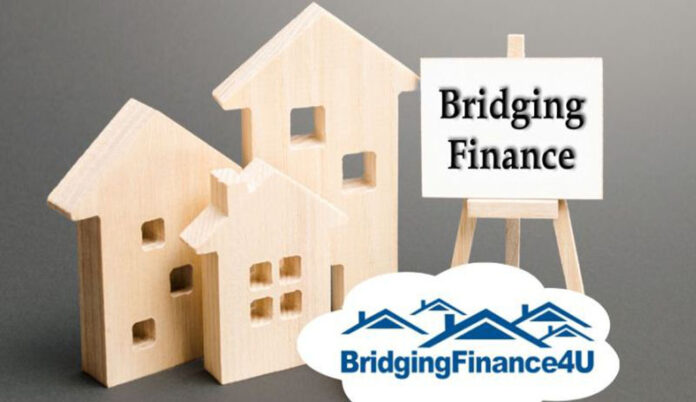How Bridging Finance Works in the UK?
Are you considering buying your first home but finding it challenging to sell your current property? Or perhaps you are eager to seize a lucrative opportunity, but your funds are tied up. In such a predicament, securing funds might seem daunting. The urgency of the situation cannot only induce stress but also impact the value of your home. However, the availability of Bridging Finance Loans in London can provide much-needed relief, offering the short-term funds you need until a more permanent solution is in place.
What is a Bridging Finance Loan?
Bridging finance is a versatile form of temporary financing that caters to individuals or companies, covering their immediate expenses until long-term funding is secured. It empowers borrowers to meet their current financial commitments, providing swift access to the necessary funds.
For bridging loans, the borrower must have some form of security, such as assets or properties, in exchange for the loan. Because of the limited duration of the loan, it is typically characterized by a higher rate of interest than other forms of loans.

How Does Bridging Finance Work?
Like traditional loans, these loans come with a fixed interest rate, usually more than conventional loans. The lender can offer to lend the funds for a period ranging from 12 to 18 months. The borrower must demonstrate an effective exit strategy to convince the lender to agree to the loan.
If the borrower is given a fixed date to repay the loan, it is deemed an open Bridging loan. If the loan period is not predetermined, it is considered an open loan for bridging.
Bridging finance is typically employed by businesses and homeowners to help bridge the gap if they are looking to purchase something but are waiting for funds to be made available through the sale of another item. Let’s look at how bridging financing works and how it can be utilized in the right circumstances.
Example #1 – Purchasing a new home
Imagine a homeowner, eager to purchase their dream house but stuck in the process due to the need to sell their current home. Bridging finance steps in as a reliable solution, providing the necessary funds to secure the new property. This financial bridge offers a sense of relief, allowing the homeowner to proceed with the purchase while their old house is on the market. Once the sale is finalized, the proceeds can be used to repay the bridging loan, completing the transition seamlessly.
Example #2 – Investing in new business opportunities
Consider a company presented with a lucrative opportunity to purchase new stock or inventory. However, their funds are tied up, leading to cash flow challenges. Bridging finance steps in as a flexible and empowering solution, allowing the business owner to seize the opportunity without disrupting their operations. This financial bridge enables the company to make the purchase and continue with the deal until a permanent financing arrangement is in place, putting the business back in control of its financial decisions.

Example #3 – Undertaking property development projects
A property developer wishes to develop a venture needing additional land acquisition and construction funding. Using bridging finance allows the developer to raise sufficient funds to begin the project and repay the loan after the project is completed. Property development financing in London is transferred to a long-term lender or secured.
Example #4 – Completing auction property purchase
Bridging finance is also helpful in making auction purchases of property. If you purchase a home at auction, the purchaser must pay 10% of the deposit on the auction day and the remainder in 28 days. In the case of a traditional mortgage, the process could take anywhere from four to six weeks before cash is paid. In this case, Bridging loans allow quick access to funds, making it possible for the buyer to finish the purchase in 28 days.
Example #5 – Renovating and flipping a property for profit
The owner wants to remodel and sell the property to earn a profit. Whether renovating the interiors, performing structural repairs, adding an extension, or bridging financing, you can help get the money you need quickly to boost the property’s value and appeal before selling.
Example #6 – Investing in buy-to-let properties
An investor in property finds an attractive real estate investment opportunity but can not access the funds available. A bridging loan could fund investments, allowing the investor to take advantage of the opportunity without delay. The investor can then refinance the property with a long-term loan, a process where the bridging loan is paid off with a more bridging finance solution, allowing the investor to continue their investment strategy.
Example #7 – Releasing equity
These loans are also a way to free up equity in the property for personal or other uses. It is especially beneficial for homeowners who wish to get funds quickly without selling their property.

What You Need to Know Before Acquiring a Bridging Loan?
It is essential to understand that these loans are intended to be used only for a brief period. You will have to pay back the entire loan plus the interest cost within several months, which means you need a sound exit strategy, for example, selling a home or refinancing, before applying for bridging financing. In addition, the interest rates for Bridging loans are more expensive than the other financing options for bridging, such as personal loans or lines of credit.
Apart from interest rates, it is essential to consider the different costs of the bridging loan. They include arrangement charges and valuation fees, legal fees, administration fees, and exit fees. All of these can significantly affect the costs of borrowing.
Additionally, bridging loans are secured loans, which means you will need to ensure a property or other asset as collateral. This can be a complex and risky process, but with the right guidance, it can also be a rewarding one. That is why it is crucial to seek advice from experienced Bridging loan specialists in the UK. They can help you find an accredited bridging loan lender, guide you through the ramifications of this loan, and negotiate favourable terms based on your specific circumstances, giving you the confidence to move forward.

Conclusion
Bridging finance is a flexible and practical solution for property owners and homeowners seeking to capitalize on profitable opportunities. These could include breaking up property chains, undertaking remodeling projects, expanding business operations, or embarking on development projects. The rapidity and versatility of bridging financing make it a dependable financing option for a wide range of ventures.
If you are considering Bridging Finance in the UK, using a professional bridging loans broker is essential. They will help you find the best banks and provide quick bridging loans that suit your requirements and ensure that you are making the most informed and secure financial decisions.






















































































